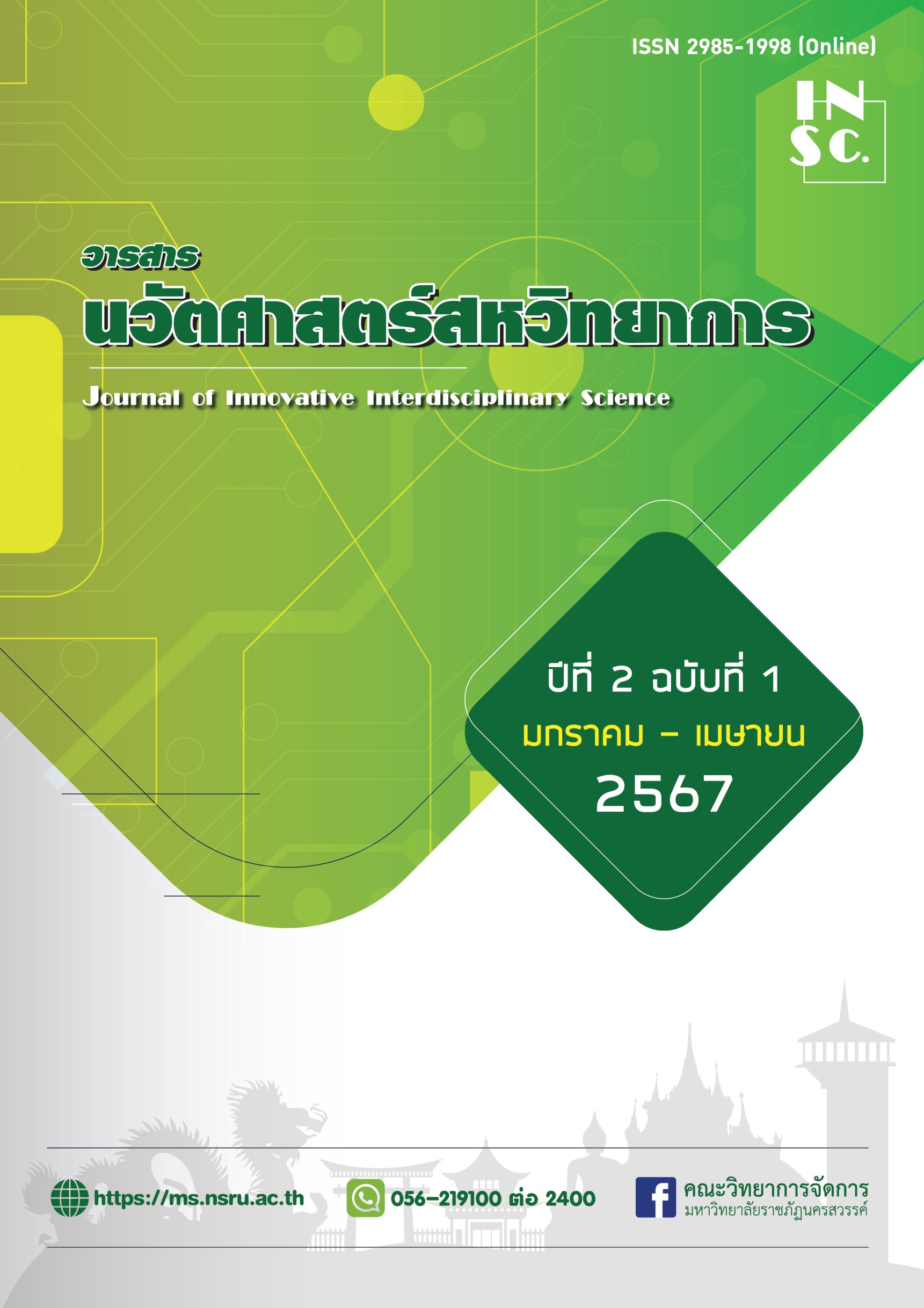MOTIVATION IN WORK AFFECTING CREATIVITY OF EMPLOYEE
Main Article Content
Abstract
The objectives of this research project are 1) to study and compare the differences in Characteristics. Personal and the motivation and creativity patterns of employees of K.T. Management and Service Company Limited 2) Study the relationship between the motivation styles and creativity of employees of K.T. Management and Service Company Limited 3) Study
the factors that affect the creativity of employees in K.T. Management and Service Company Limited. The sample group was employees of K.T. Management and Services Co., Ltd. by the population used in A study of 120 people. The variables used in the research consisted of 2 variables: Independent Variable, which consisted of Employees' work motivation includes work success, characteristics of work in terms of advancement and job security Interpersonal
relations Compensation and welfare and the work environment, and the dependent variable (Dependent Variable) is employee creativity. The results of the study and research project found that the level of perceived motivation varies according to personal factors. Including gender, status, education level and average monthly income for creativity, it varies according to personal factors such as age, status, and level of education. and average monthly income Statistically significant at the 0.05 level, which is motivation in terms of work success. Nature of work in terms of advancement and job security Interpersonal relations Compensation and welfare It affects the creativity of employees. Therefore, leaders should have characteristics that emphasize both work and relationships. Accept and listen to employees' opinions, compromise and encourage employees. These factors will result in employees becoming more creative.
Article Details
References
กัลยภรณ์ ดารากร ณ อยุธยา. (2554). “ความสัมพันธ์ระหว่างรูปแบบภาวะผู้นํา วัฒนธรรมองค์การกับ
ความคิดสร้างสรรค์ของบุคคล ศึกษาศึกษาธนาคารพาณิชย์ในเขตจังหวัดนครปฐม. (วิทยานิพนธ์
บริหารธุรกิจมหาบัณฑิต) บัณฑิตวิทยาลัย, มหาวิทยาลัยศิลปากร.
เกรียงศักดิ์ เจริญวงศ์ศักดิ์. (2556). การคิดเชิงสร้างสรรค์. กรุงเทพฯ: ซัคเซส มีเดีย.
จารุวรรณ กมลสินธุ์. (2548). แรงจูงใจในการปฏิบัติงานของพนักงานในเขตส่งเสริมอุตสาหกรรมนวนคร.
(วิทยานิพนธ์บริหารธุรกิจมหาบัณฑิต), สาขาบริหารธุรกิจ มหาวิทยาลัยธุรกิจบัณฑิตย์.
ฐิตวดี เนียมสุวรรณ์.(2554). รูปแบบภาวะผู้นำ แรงจูงใจภายในที่มีอิทธิพลต่อความคิดสร้างสรรค์ของ
พนักงาน กรณีศึกษา ธนาคารกรุงไทย จำกัดมหาชน. (วิทยานิพนธ์บริหารธุรกิจมหาบัณฑิต) บัณฑิตวิทยาลัย มหาวิทยาลัยศิลปากร.
ทิมมิกา เครือเนตร.(2554). ภาวะผู้นำกับแรงจูงใจในการทำงานของพนักงาน บริษัท ไทยฟู้ดส์ กรุ๊ป จำกัด.
(วิทยานิพนธ์บริหารธุรกิจมหาบัณฑิต) มหาวิทยาลัยราชภัฏวไลยอลงกรณ์.
ประสพชัย พสุนนท์. (2558). ความเที่ยงตรงของแบบสอบถามสำหรับงานวิจัยทางสังคมศาสตร์. วารสาร
สังคมศาสตร์ มหาวิทยาลัยศรีนครินทรวิโรฒ, 18(1), 375-396.
ศิวิไล กุลทรัพย์สุทรา. (2552). แรงจูงใจในการปฏิบัติงานของพนักงาน บริษัท เอ.เอส. แอสโซซิเอท
เอนยิเนียริ่ง (1964) จํากัด. (วิทยานิพนธ์บริหารธุรกิจมหาบัณฑิต) มหาวิทยาลัยราชภัฏพระนคร.
สุวิทย์ มูลทำ. (2557). กลยุทธ์-การสอนคิดสังเคราะห์. (พิมพ์ครั้งที่ 5). กรุงเทพฯ : ภาพพิมพ์
Andriopoulos, C. & Lowe, A. (2000). Enhancing organisational creativity: the process of
perpetual challenging. Management Decision, 38(10), 734 –742.
De Bono, Edward (1970). Lateral Thinking. Harmondsworth, UK: Penguin.
McGregor, D. (1960). The Human Side of Enterprise. New York : McGraw-Hill.
Taylor, C.W. (1964). Creativity : Progress and Potential. New York: McGraw – Hill.
Torance, E.P. (1963). Education and the creative potential. Minneapolis : The Lund Press.
Tosi, H. L., & Carroll, S. J. (1982). Management. New York: John Wiley & Sons.
Tushman, M. L. and C. A. O’Reilly (1997), Ambidextrous Organizations: Managing
Evolutionary and Revolutionary Change, California Management Review 38, 1-23.


